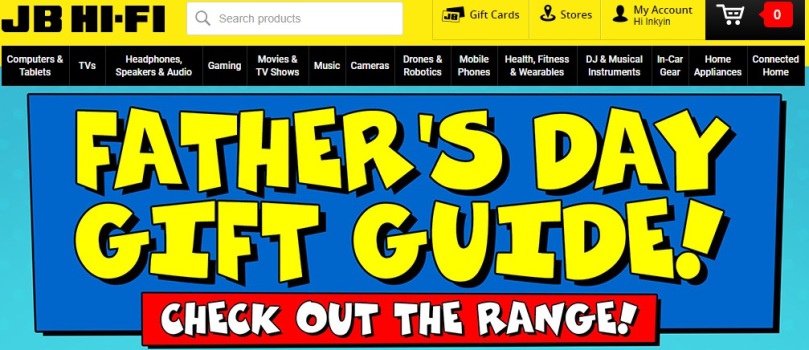The 6 I’s of internet marketing consist of: interactivity, intelligence, individualization, integration, industry restructuring and independence of location. This post will focus on interactivity, intelligence, individualization, integration and independence of location.
Interactivity
Chaffey and Ellis-Chadwick (2016, p. 37) states the characteristics of interactivity are: customers will initiate contact, and the customer uses the site to seek information. JB Hi-Fi’s website allows for their customers to engage with the products they offer through the search bar. Customers that have any enquires can contact them through the ‘contact us’ page and the business will respond within a 24 hours. JB Hi-Fi’s website is well designed as customers can easily maneuver and engage with the content.
![]()

Intelligence
Intelligence is a cost efficient method of collecting data on customers. This method provides intelligence on customer’s activities and preferences (Chaffey & Ellis-Chadwick 2016, p. 38). JB Hi-Fi uses cookies to gather data on their customers that they will use in the future (Versaw 2011).

Individualization
Individualization refers to the customization based on a customer’s location, gender, interests, age etc to provide more personalized content (Chaffey & Ellis-Chadwick 2016; Versaw 2011). When I go onto JB’s website I am greeted with ‘Hi Inkyin’.

Currently when customers visit the website, they are greeted with ‘Father’s day gift guide’, this can be deemed as personalization as the ad is targeting individuals that might be looking to purchase a gift for their father.

Integration
Integration is the use of multiple marketing channels to communicate with their customers (Chaffey & Ellis-Chadwick 2016, p. 38). JB Hi-Fi uses Facebook, Twitter, Youtube and Google Plus as tools to communicate with their customers and customers can also use these social media platforms to communicate with the business. Communication between the business and customer is more efficient on these platforms.




Independence of Location
Independence of location is being able to connect with customers no matter where they are. Customers can use their mobile phones, tablets and personal computers to access the website from anywhere at anytime to their convenience (Versaw 2011).

References
Chaffey, D & Ellis-Chadwick (eds) 2016, Digital Marketing, Pearson, UK
JB HI FI 2018, JB HI FI, viewed 23rd August 2018, <https://www.jbhifi.com.au/>
Versaw, K 2011, ‘The 6 I’s of internet marketing’, Hubshout, web log post, 16th August, viewed 23rd August 2018, <https://hubshout.com/?The-6-I%E2%80%99s-of-Internet-Marketing&AID=324>

